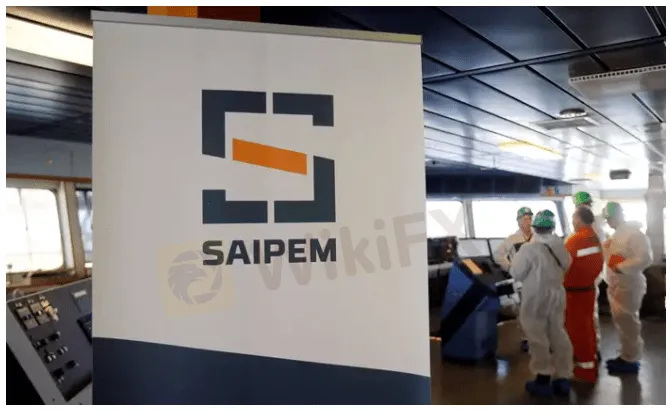简体中文
繁體中文
English
Pусский
日本語
ภาษาไทย
Tiếng Việt
Bahasa Indonesia
Español
हिन्दी
Filippiiniläinen
Français
Deutsch
Português
Türkçe
한국어
العربية
Saipem to launch 2 billion euro cash call, sell assets in rescue plan
Abstract:Saipem will launch a 2 billion euro ($2.2 billion) capital increase this year and sell assets to help fund a turnaround plan to take the troubled Italian energy services group back into the black

.
Saipem, controlled by energy group Eni and state lender CDP, said its two core investors and banks would advance 1.5 billion euros of the capital increase, confirming what sources told Reuters.
Eni and CDP, tied by a shareholder pact, will stump up 645 million euros while the banks will fund 855 million euros to help meet short-term liquidity needs.
Saipem said it also expected to raise more than 1.5 billion euros from asset sales, including its onshore drilling business where “exclusive negotiations with a leading international operator” are under way.
Saipem stunned investors in January when it downgraded earnings by a billion euros due to a significant deterioration of margins on some contracts, including offshore wind.
Its net loss last year was 2.467 billion euros.
In its new plan to 2025, it said it would cut costs and focus more on its legacy offshore engineering and construction business where it expected average growth of 8% to 2025, especially in the Middle East and Africa.
“The plan does not envisage the acquisition of new contracts in Russia,” it said. Russian orders currently account for 1% of the groups IFRS backlog.
It said the energy transition remained a focus but said it was repositioning on its low-risk offshore wind business for the next two years.
Saipem, a market leader in subsea E&C, has been looking to develop new lines of business to meet an increasing customer focus on green technologies, including offshore wind.
But analysts say renewable energy requires a different set of skills to guarantee the kind of returns Saipem has achieved from its traditional business.
Adjusted core earnings are expected to be more than 500 million euros this year after a loss of more than 1 billion euros in 2021.
The company said it would return to cash generation between 2023 and 2024 with around 700 million euros in cash expected in 2025.
Banks will also arrange a new revolving credit facility of up to 1 billion euros by the start of the cash call and bilateral signature lines worth around 1.35 billion euros.
($1 = 0.9070 euros)

Disclaimer:
The views in this article only represent the author's personal views, and do not constitute investment advice on this platform. This platform does not guarantee the accuracy, completeness and timeliness of the information in the article, and will not be liable for any loss caused by the use of or reliance on the information in the article.
Read more
Vault Markets Review 2025: Live & Demo Accounts, Withdrawal to Explore
Vault Markets, a South African-based broker, has attracted much attention in recent days, particularly within its region. This online broker only offers access to focused trading opportunities on Indices, Currencies, Energies, and Metals, yet it shines on low minimum deposits plus various bonus programmes, which would encourage more investors, especially beginners, to trade with a small budget. However, Vault Markets operates outside of the authorized scope, so we don't consider it solid to trade with.

FBK Markets Review 2025: Live & Demo Accounts, Withdrawals to Explore
FBK Markets, a young South African forex broker, targets both beginners and experienced traders within this region. This broker shines at its low minimum deposit required, 100% deposit bonus, and flexible account options, yet we cannot consider it reliable as it operates without any regulation. Furthermore, it features an approximately 70% withdrawal failure rate.

OlympTrade Review 2025: Trading Accounts, Demo Account, and Withdrawal to Explore
OlympTrade is a relatively young online broker registered in Saint Vincent and the Grenadines, a shady spot with a booming of unlicensed entities. Tradable assets on the OlymTrade are not extensive, and this broker does not tell many essential trading conditions. As for trading platforms, I found trades can only operated on a simple web-based trading platform, no Metatrader platform at all.

T4Trade Review 2025: Live & Demo Accounts, Withdrawal to Explore
T4Trade, established in 2021 and regulated by the FSA in the Seychelles, allows trading on a modest portfolio of over 300 instruments, spanning forex, metals, indices, commodities, futures, and shares, all accessible via the popular MetaTrader 4 and their proprietary WebTrader platforms. Notably, T4Trade offers a zero-commissions pricing model where both floating and fixed spreads are offered on its MetaTrader—flexible leverage up to 1000:1 to increase trading flexibility. T4Trade also introduces a copy trading service called “TradeCopier”, which enables traders who lack experience or time to join in the markets by copying the trades of seasoned professionals.
WikiFX Broker
Latest News
Is $CORONA Memecoin a Legit Crypto Investment?
Is Pi Network the Next Big Crypto Opportunity?
Is Linkbex a Scam? SFC Warns of Virtual Asset Fraud in Hong Kong
Donald Trump’s Pro-Crypto Push Boosts PH Markets
5 Best Copy Trading Brokers: You Can Trust in 2025
3 EXCLUSIVE Ramadan Offers That Won’t Last Long! ACT NOW
The Next Crypto Giants: 5 Altcoins to Watch
Japan’s Shift in Crypto Policy and What It Means for Investors
Forex Trading: Scam or Real Opportunity?
The Hidden Tactics Brokers Use to Block Your Withdrawals
Currency Calculator






